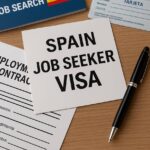Traveling to Europe is a dream for many, and with the Schengen visa, visiting multiple European countries becomes significantly easier. The Schengen Area consists of 29 European countries that have officially abolished border controls between each other. A Schengen visa allows you to travel freely within these countries for up to 90 days within a 180-day period. Here’s everything you need to know to successfully apply for a Schengen visa in 2025.
Step 1: Know the Type of Visa You Need
There are different types of Schengen visas depending on your purpose of visit:
-
Tourist Visa – for leisure or sightseeing
-
Business Visa – for attending meetings, conferences, or professional engagements
-
Transit Visa – for airport layovers within the Schengen zone
-
Study/Training Visa (short-term) – for courses or training under 90 days
-
Visit Visa – for visiting friends or family
For trips longer than 90 days, you’ll need a national visa (Type D) from the specific country you’re staying in.
If you need an explanation on writing your CV, Cover Letter and Email Template or help applying speak to Happy Face
Step 2: Determine Your Main Destination
Your application must go through the embassy or consulate of the country that is your main destination—where you will spend the most time. If you’re visiting multiple countries with equal stay duration, apply through the country of first entry.
Step 3: Gather the Required Documents
Make sure all your documents are recent and valid:
-
Visa Application Form – Completed and signed
-
Valid Passport – Issued within the last 10 years, valid for at least 3 months beyond your return date, with two blank pages
-
Two Passport-Sized Photos – As per Schengen photo standards
-
Travel Itinerary – Including round-trip flight reservations and accommodation bookings
-
Proof of Financial Means – Bank statements for the last 3-6 months, sponsorship letter, or payslips
-
Travel Insurance – Minimum coverage of €30,000 valid in all Schengen countries
-
Cover Letter – Explaining the purpose of your trip and travel plans
-
Proof of Employment/Study – Letter from employer or school
-
Visa Fee – €90 for adults (as of 2025), paid in local currency or via approved methods
Step 4: Book a Visa Appointment
You must schedule an appointment with the consulate, embassy, or outsourced visa application center (like VFS Global or TLScontact). Waiting times vary, so book early—preferably 3 to 6 weeks before your planned travel.
In many countries, you can apply up to 6 months in advance (or 9 months for seafarers), and no later than 15 working days before your trip.
If you need an explanation on writing your CV, Cover Letter and Email Template or help applying speak to Happy Face
Step 5: Attend the Visa Interview
At your appointment:
-
Bring original documents and photocopies
-
Be punctual and honest during the interview
-
Provide biometric data (fingerprints and photo), unless you’ve done so in the last 59 months
Some applicants may be asked for additional documentation or a second interview.
Step 6: Wait for Processing
The typical processing time is 15 calendar days, but it can extend to 30 or 60 days in exceptional cases. You can track your application online if submitted through an external service provider.
Step 7: Collect Your Passport
Once your application is processed, you’ll receive your passport with either:
-
A visa sticker, specifying your permitted stay and entry conditions
-
Or a rejection notice, stating the reason(s)
If denied, you have the right to appeal within 30 days or reapply with corrected documentation.
If you need an explanation on writing your CV, Cover Letter and Email Template or help applying speak to Happy Face
Important Schengen Visa Tips for 2025
-
Digital applications are expanding across Europe. Some countries now allow parts of the application to be completed online.
-
From mid-2025, the European Travel Information and Authorisation System (ETIAS) will be enforced for visa-free travelers, but it does not apply to Schengen visa applicants.
-
Be cautious with fake bookings—consulates can verify hotel and flight reservations.
-
Travel insurance must be from a recognized provider; many embassies have a list of approved companies.
-
For applicants from Africa, South Asia, or the Middle East, showing strong ties to your home country (like family, job, or property) helps improve approval chances.








